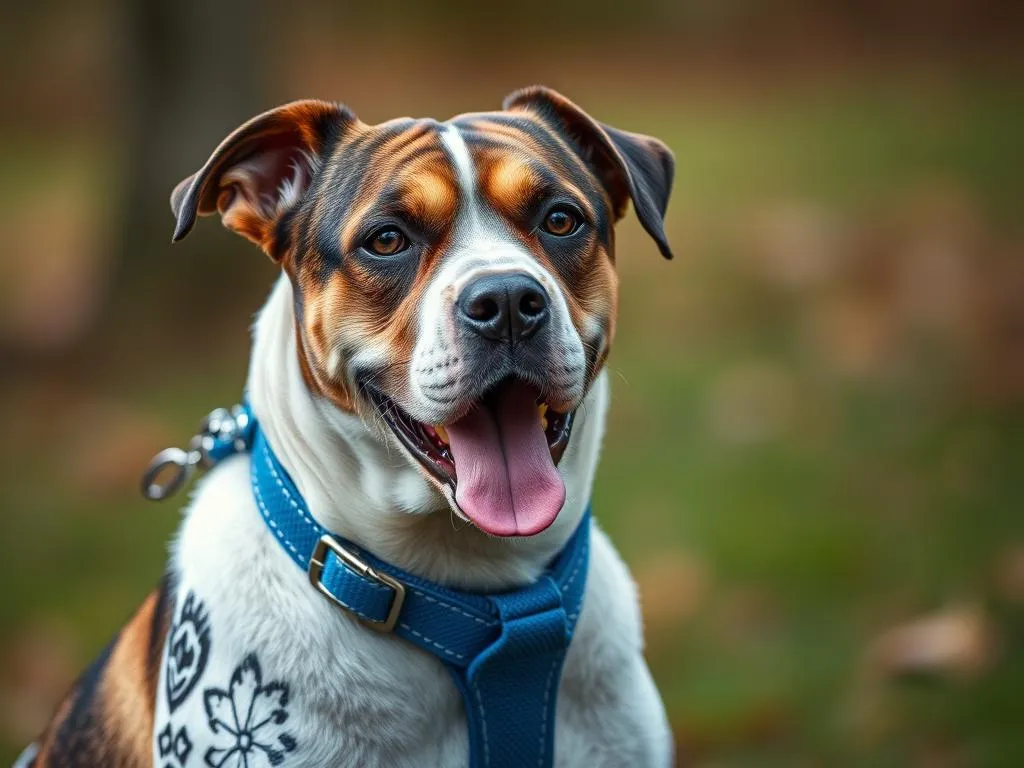
Choosing the right dog halter is essential for every pet owner. Whether you’re a seasoned dog enthusiast or a first-time pet parent, understanding the different types of halters available can significantly enhance your dog-walking experience. With numerous options on the market, it can be overwhelming to determine which halter is best suited for your furry friend. This guide aims to provide you with an in-depth look at the best dog halters, helping you make an informed decision that benefits both you and your pet.
Understanding Dog Halters
Definition of Dog Halters
A dog halter is a specialized piece of equipment designed to provide better control over your dog during walks. Unlike traditional collars that apply pressure around the neck, halters distribute pressure more evenly across the dog’s face or body, making them a more humane option for controlling pulling behavior.
Types of Dog Halters
Dog halters typically fall into two categories: head halters and body halters.
-
Head Halters: These halters fit over the dog’s nose and around the back of their head, similar to a horse’s halter. They are particularly beneficial for dogs that pull on the leash, as they gently guide the dog’s head in the direction you want to go. Head halters are excellent for training and provide a high level of control.
-
Body Halters: Body halters, or harnesses, fit around the dog’s torso, distributing pressure across their body rather than the neck. These are ideal for small breeds, puppies, or dogs that are sensitive around their necks. Body halters are often used for daily walks and provide a comfortable fit for most dogs.
Benefits of Using Dog Halters
Utilizing a dog halter offers several advantages:
- Improved Control During Walks: Halters give owners greater control over their dogs, reducing the risk of escaping or becoming distracted.
- Reduction in Pulling Behavior: Many dogs pull on the leash, leading to frustrating walks. Halters can help curb this behavior by redirecting the dog’s attention.
- Enhanced Comfort: Both head and body halters are designed to be comfortable for dogs, minimizing strain on their necks and ensuring a more pleasant walking experience.
Key Features to Consider When Choosing a Dog Halter
When selecting the best dog halter for your pet, several key features should be taken into account.
Size and Fit
Getting the right size is crucial to ensure your dog is comfortable and secure in their halter. Measuring your dog’s neck and girth will help you find the perfect fit. Many brands offer sizing charts to guide you through this process, which is essential for both safety and effectiveness.
Material and Durability
The materials used in the construction of dog halters can significantly affect their longevity. Common materials include nylon and leather:
- Nylon: Lightweight and available in various colors, nylon halters are strong and durable but may wear out quicker than leather.
- Leather: Known for its durability, leather halters can withstand wear and tear over time but may require more maintenance.
Consider your dog’s activity level and environment when choosing the material.
Adjustability and Ease of Use
A good halter should be easily adjustable to accommodate your dog’s changing size and ensure a snug fit. Look for designs that allow for easy application and removal, as this will make your walks more enjoyable.
Safety Features
Safety should always be a priority. Opt for halters that include reflective materials for nighttime visibility. Additionally, breakaway features can be vital for preventing accidents if the halter gets caught on something.
Top 10 Best Dog Halters
Here is a curated list of the best dog halters available, complete with key features, pros and cons, price ranges, and customer ratings.
Product Reviews
Gentle Leader Headcollar
– Key Features: Padded nose strap, adjustable fit, and reflective stitching.
– Pros: Provides excellent control, reduces pulling, and easy to fit.
– Cons: Some dogs may resist wearing it at first.
– Price Range: $15 – $30
– Customer Ratings: 4.5/5 stars
PetSafe Easy Walk Harness
– Key Features: Front-clip design, adjustable straps, and quick-snap buckles.
– Pros: Reduces pulling effectively, comfortable for dogs, and easy to put on.
– Cons: May not fit certain breeds well.
– Price Range: $20 – $35
– Customer Ratings: 4.6/5 stars
Kurgo Tru-Fit Smart Harness
– Key Features: Crash-tested, adjustable fit, and padded for comfort.
– Pros: Suitable for car travel, durable, and versatile.
– Cons: Slightly bulkier than other designs.
– Price Range: $30 – $50
– Customer Ratings: 4.7/5 stars
PetSafe EasySport Dog Harness
– Key Features: Breathable mesh, adjustable straps, and multiple attachment points.
– Pros: Comfortable for long walks, lightweight, and easy to clean.
– Cons: May not suit strong pullers as well.
– Price Range: $25 – $40
– Customer Ratings: 4.4/5 stars
Blue-9 Balance Harness
– Key Features: Unique design, adjustable fit, and allows freedom of movement.
– Pros: Great for training, reduces pulling, and good for all breeds.
– Cons: Requires proper fitting for best results.
– Price Range: $30 – $45
– Customer Ratings: 4.8/5 stars
Ruffwear Front Range Harness
– Key Features: Two leash attachment points, padded chest and belly straps.
– Pros: Durable, easy to put on, and well-suited for active dogs.
– Cons: Higher price point.
– Price Range: $40 – $60
– Customer Ratings: 4.7/5 stars
PetSafe Easy Walk Headcollar
– Key Features: Lightweight, adjustable, and features a quick-snap buckle.
– Pros: Effective in controlling pulling, simple design.
– Cons: Some dogs may chew on it.
– Price Range: $18 – $28
– Customer Ratings: 4.3/5 stars
Doggie Design Soft Mesh Harness
– Key Features: Soft mesh fabric, adjustable straps, and step-in design.
– Pros: Comfortable, great for small dogs, and easy to clean.
– Cons: Limited for larger breeds.
– Price Range: $15 – $25
– Customer Ratings: 4.5/5 stars
PetFusion Better Dog Harness
– Key Features: Dual clip design, padded chest, and back support.
– Pros: Good for training, durable, and easy to adjust.
– Cons: May not fit all breeds perfectly.
– Price Range: $30 – $45
– Customer Ratings: 4.6/5 stars
Voyager Step-in Air Dog Harness
– Key Features: Breathable fabric, easy step-in design, and adjustable.
– Pros: Lightweight, comfortable, and affordable.
– Cons: Not suitable for dogs that pull heavily.
– Price Range: $10 – $20
– Customer Ratings: 4.4/5 stars
Comparison Table
| Product Name | Type | Price Range | Customer Ratings |
|---|---|---|---|
| Gentle Leader Headcollar | Head Halter | $15 – $30 | 4.5/5 |
| PetSafe Easy Walk Harness | Body Halter | $20 – $35 | 4.6/5 |
| Kurgo Tru-Fit Smart Harness | Body Halter | $30 – $50 | 4.7/5 |
| PetSafe EasySport Dog Harness | Body Halter | $25 – $40 | 4.4/5 |
| Blue-9 Balance Harness | Body Halter | $30 – $45 | 4.8/5 |
| Ruffwear Front Range Harness | Body Halter | $40 – $60 | 4.7/5 |
| PetSafe Easy Walk Headcollar | Head Halter | $18 – $28 | 4.3/5 |
| Doggie Design Soft Mesh Harness | Body Halter | $15 – $25 | 4.5/5 |
| PetFusion Better Dog Harness | Body Halter | $30 – $45 | 4.6/5 |
| Voyager Step-in Air Dog Harness | Body Halter | $10 – $20 | 4.4/5 |
How to Train Your Dog to Use a Halter
Getting Your Dog Comfortable with a Halter
Introducing a dog halter to your pet should be a gradual process. Start by allowing your dog to sniff and explore the halter before attempting to put it on. Use treats to create a positive association. Once your dog seems comfortable with the halter, try putting it on for short periods, gradually increasing the time as they become accustomed to it.
Training Techniques for Effective Use
Once your dog is comfortable wearing the halter, consider these training techniques:
- Practice Walking Indoors: Begin by walking your dog indoors to let them adjust to the feel of the halter while on a leash. Reward them for good behavior.
- Use Commands: Teach your dog commands like “heel” or “let’s go” to encourage desired behavior while walking.
- Correct Pulling: If your dog begins to pull, stop walking and wait until they return to your side. Reward them when they do to reinforce the behavior.
Common Mistakes to Avoid
Many dog owners make mistakes when introducing a halter. Here are some common pitfalls:
- Rushing the Acclimation: Allow your dog time to adjust to wearing the halter. Don’t rush into long walks right away.
- Using the Halter as Punishment: Never use the halter to yank or jerk your dog. It should be a tool for guidance, not punishment.
- Neglecting Training: Failing to train your dog while using the halter can lead to continued pulling or other undesirable behaviors.
Frequently Asked Questions (FAQs)
What is the difference between a halter and a harness?
While both halters and harnesses are designed for walking dogs, they serve different purposes. A dog halter typically attaches around the dog’s head, giving the owner better control over the dog’s movements, especially for pulling issues. In contrast, a harness fits around the dog’s body, distributing pressure more evenly and providing comfort, particularly for dogs that may have neck sensitivity.
Can any dog use a halter?
Most dogs can use a halter, but it depends on the type and size of the halter. For example, head halters may not be suitable for brachycephalic breeds (like Bulldogs and Pugs) due to their facial structure. Always choose a halter that fits your dog’s size and shape properly.
How do I clean and maintain my dog halter?
Cleaning your dog halter will depend on the material. For nylon halters, a simple wash with mild soap and water will suffice. For leather halters, use a leather conditioner to maintain flexibility and prevent cracking. Always follow the manufacturer’s care instructions to ensure longevity.
Conclusion
Choosing the right dog halter can make a world of difference in your walking experience with your furry friend. By understanding the types of halters, their benefits, and key features to consider, you can find the perfect fit for your dog. Remember to train your dog effectively to maximize the benefits of using a halter, and enjoy many enjoyable walks together!










